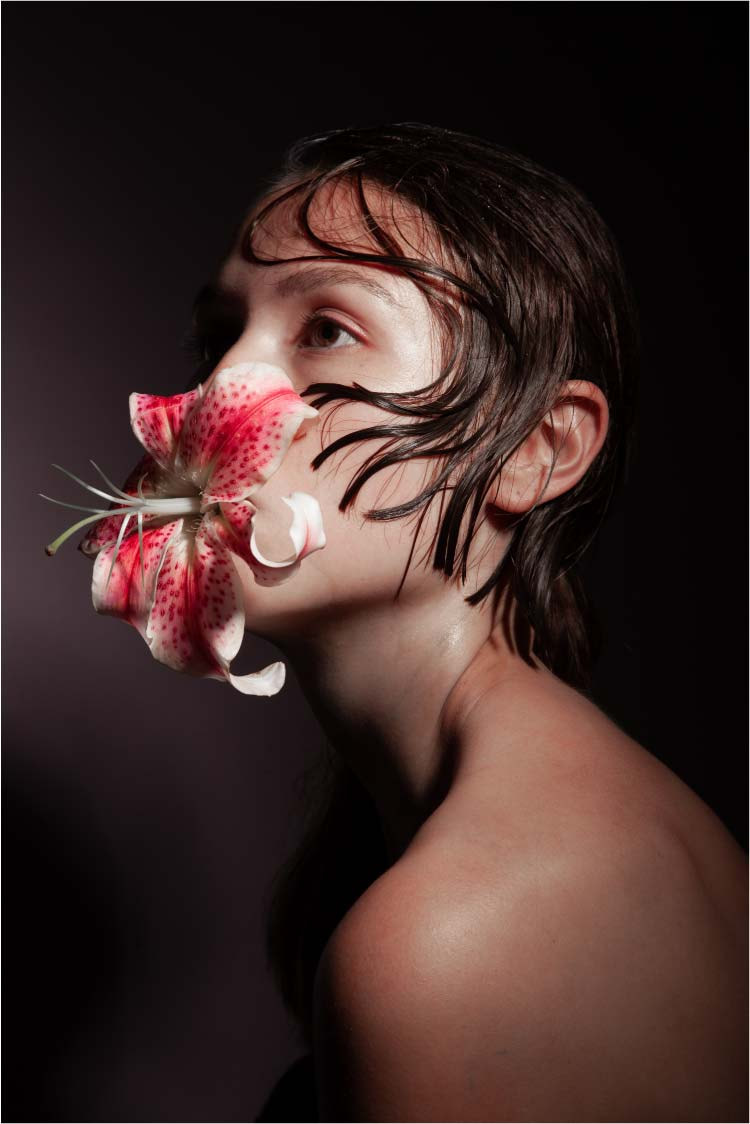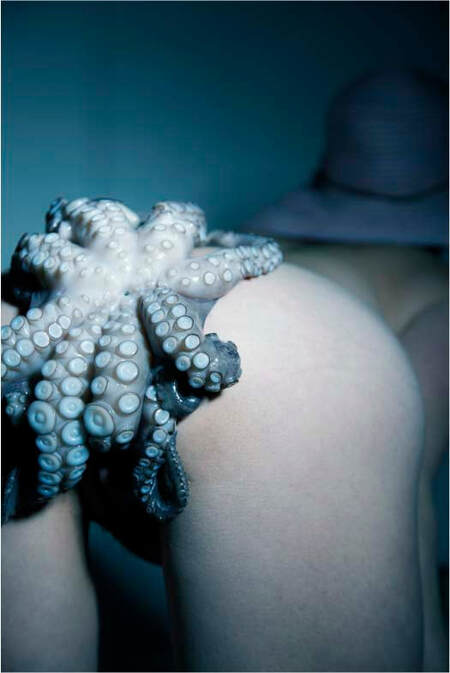Bodies, bodies, bodies – bodily empowerment and birth making with the German-Ukrainian artist Alina Gross |
an article written by Milia Wallenius
With voluptuous shapes and mesmerizing colors Alina Gross’ pictures are a feast for the eyes while carrying important messages concerning acceptance and body positivity. Alina Gross (b. 1980) is a German-Ukrainian award-winning artist and photographer based in Bochum, Germany. She is known for her colorful and suggestive photographs depicting details of the female body. Gross started photographing years ago and has taken part in multiple exhibitions as well as more commercial projects such as high-end editorials and collaborations with fashion magazines like Vouge. She is recognized for her artistic vocabulary that effortlessly moves between figuration and abstraction, still life and portraiture, installation and sculpture. As well as her strong color palette of delicious pinks, blues, yellows and greens, which make her works pop like candy. According to Gross she chose photography as her artistic medium due to its universal language and ability to be understood across cultures. She has spent years perfecting her style in order to find her unique visual language.
“I photographed for years until I understood that I had to focus my work. Especially at a time when photography has become a mass medium and is consumed multiple times, it is important to develop your own vision and to pursue it consistently so as not to become inflationary.” Gross often works with topics such as flora, body and sexuality. By focusing or structuring her work around certain themes and a certain aesthetic she creates a framework for her artistic practice. This helps her feel true to herself and her work in a meaningful way. Her compositions are often triggered by a vision, or a color or a plant.
“For me the picture composition is important, the perspective, picture section, working with color etc. For me the minimalistic design is just right, my visual language is reduced.” Gross works in small teams and uses close-up macro imagery. She likes to get close to her subjects in order to create a sense of intimacy in her pictures, which often play with eroticism. “I'm influenced by Robert Mapplethorpe’s work, his eroticized view of flora and the minimalism in his work. I like the clear and graphic design and the sensuality of his body images, which are reminiscent of ancient sculptures.” Alongside American photographer Robert Mapplethorpe Gross also mentions American modernist painter Georgia O’Keeffe, known for her erotic paintings of flowers and plants. Much in the style of O’Keeffe, Gross uses flowers and colors as symbols to create visual metaphors. “Georgia O'Keeffe's abstract vulva depictions and recurring vulva symbolism was way ahead of her time and to me she is a pioneer of sensual feminism. I was also influenced and inspired by Louise Bourgeois and her raw, sensual, feminist view of womanhood. I love the way she uses symbols like the spider and works with the symbolism (spider) in a subtle and exciting way.”
Gross’ use of symbolism allows for multiple interpretations of her work. As spectators we are invited close to inspect and analyze the complex meanings of her photographs. The influence of Louise Bourgeois, the French American artist known for her large-scale sculptures and installations dealing with domesticity, family, and sexuality, is however probably most evident in Gross’ work surrounding themes of motherhood. Gross found a real interest in depicting the female body after she become a mother. She has compared her creative process to giving birth. “I love the creative process. I link it to the emergence of new life; an impulse that first grows inside a uterus and then is delivered to the world after nine months.” With her work Gross likes to address themes such as birth, sexuality and the representation of bodies. She is especially interested in depictions of bodies before and after birth. “The birth was a very important event – as inspiration but also as a stigmatized subject. Also, the body after birth; a subject occupied by shame and cliché. I'm also an active advocate for breastfeeding in public by practicing it myself, time and time again, everywhere.”
By focusing on the female post-partum body and themes related to motherhood and birth giving (such as breastfeeding) Gross takes an active stand in the fight against stereotypes. Her exploration of the bumps and lumps of the body paves the way for new perspectives. This includes new ways of looking, seeing, accepting and embracing bodily differences that make each body unique and beautiful. The result is a set of joyful and empowering works that celebrate life and the vessel in which we live and give it – the body. A colorful reminder of body positivism, to cherish and care for the bodies we have and not fall for social constructs of beauty. In her work imperfection is perfection.
|
SUPPORTARTICULATE
www.articulate.nu SUPPORT Monday - Friday 8:00 - 16:00 [email protected] +45 30 48 19 81 Head Quarters VAT DK40953191 |
|










